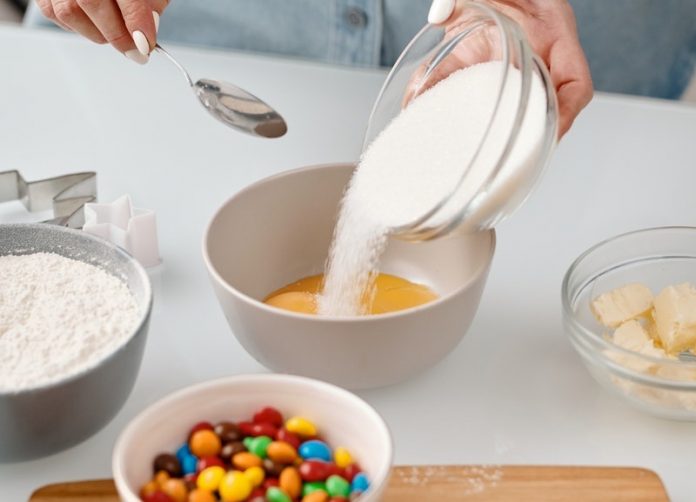A casual stroll down the drink aisle of any corner store demonstrates the remarkable creativity of food scientists in their pursuit of sweet flavours.
Some drinks contain sugar. A diet soda could contain an artificial or natural low-calorie sweetener. High fructose corn syrup, the king of sweetness in the United States, can be found in almost everything.
I am a chemist who studies natural substances, and I also enjoy eating.
With confusing food labels advertising meals and beverages to be diet, zero-sugar, or "no artificial sweeteners," it can be difficult to tell exactly what you're eating.
So, what are these lovely molecules? How do cane sugar and artificial sweeteners produce such comparable flavours? First, it is important to understand how taste buds function.
Taste buds and Chemistry
The "taste map" theory, which holds that different flavours are detected on different areas of your tongue, is incorrect. People can taste all flavours wherever there are taste buds. So, what is a taste bud?
Taste buds are regions of the tongue that contain dozens of taste receptor cells. These cells can perceive all five flavours: sweet, sour, salty, bitter, and umami.
When you eat, food molecules dissolve in saliva and travel across your taste buds, where they attach to the various taste receptor cells.
Only molecules with certain shapes can connect to specific receptors, resulting in the sense of diverse flavours.
Sweet-tasting molecules bind to certain proteins on taste receptor cells known as G-proteins. When a chemical connects to these G-proteins, it sends a succession of signals to the brain, which interprets them as sweet.
Natural sugars
Natural sugars are carbohydrates known as saccharides, which are composed of carbon, oxygen, and hydrogen. Sugars can be thought of as carbon-atom rings with oxygen and hydrogen pairs attached to the outside.
Sugar's sticky properties are due to the oxygen and hydrogen groups. They act like Velcro, adhering to the oxygen and hydrogen pairs of other sugar molecules.
Monosaccharides are the simplest sugars since they are made up of single molecules. You've undoubtedly heard of some of them.
Glucose is the most basic sugar, which is mostly produced by plants. Fructose is a sugar derived from fruit. Galactose is a sugar found in milk.
Table sugar, or sucrose, derived from sugar cane, is an example of a dissacharide, a compound composed of two monosaccharides.
Sucrose is generated when a glucose and a fructose molecule come together. Other prevalent dissacharides include lactose from milk and maltose from grains.
When these carbohydrates are consumed, the body processes each one slightly differently.
However, they are finally broken down into molecules, which your body uses for energy. Sugar's energy content, like that of all foods, is measured in calories.
High-fructose corn syrup.
High fructose corn syrup is a food staple in the United States, and this hybrid sugar sweetener deserves its own category. High fructose corn syrup is manufactured from corn starch, the primary carbohydrate present in corn.
Corn starch is composed of thousands of glucose molecules linked together. At industrial scale, enzymes are used to break down the starch into individual glucose molecules.
This glucose is subsequently handled with another enzyme, which converts some of it into fructose. Generally, high fructose corn syrup has 42%-55% fructose.
This blend is sweet and inexpensive to create, but it has a high calorie count. High fructose corn syrup, like other natural sugars, is harmful to your health if consumed in excess.
And because most processed foods and beverages include a lot of it, it's easy to consume too much.
Natural non-sugar sweeteners.
The second type of sweetener might be classified as natural nonsugar sweeteners. These include culinary additives like stevia and monk fruit, as well as natural sugar alcohols.
These molecules are not sugars, yet they can connect to sweet receptors and hence taste sweet.
Stevia is a chemical extracted from the leaves of the Stevia redaudiana plant. It comprises "sweet" molecules, which are significantly larger than normal sugars and have three glucose molecules connected.
These molecules are 30–150 times sweeter than glucose. Monk fruit contains sweet molecules akin to stevia and 250 times sweeter than glucose.
The human body has a difficult time breaking down stevia and monk fruit. So, despite the fact that they are both quite sweet, they have no calories.
Sugar alcohols, such as sorbital, are less sweet than sucrose.
They can be found in a range of foods, such as pineapples, mushrooms, carrots, and seaweed, and they are frequently added to diet drinks, sugar-free chewing gum, and other foods and beverages.
Sugar alcohols are formed up of chains of carbon atoms rather than circles like regular sugars.
Sugar alcohols, which are made up of the same atoms as sugars, are not readily absorbed by the body and are hence called low-calorie sweeteners.
Artificial sweeteners.
The third method for making anything sweet is to add artificial sweeteners. These substances are synthetic and do not occur naturally.
All items that taste sweet do so because they can attach to specific receptors in taste buds.
So far, the United States Food and Drug Administration has approved six artificial sweeteners. The most well-known are undoubtedly saccharin, aspartame, and sucralose, also known as Splenda.
Chemically, artificial sweeteners differ from one another. Some resemble natural sugars, while others are completely different.
They are typically much sweeter than sugar (saccharin is 200 to 700 times sweeter than table sugar), and some of them are difficult for the body to digest.
While many people enjoy a sweet dessert, the chemistry of how your taste buds sense sweetness is more complex.
Only molecules with the correct combination of atoms taste sweet, but our bodies handle each of these molecules differently in terms of calories.

Comments
Post a Comment